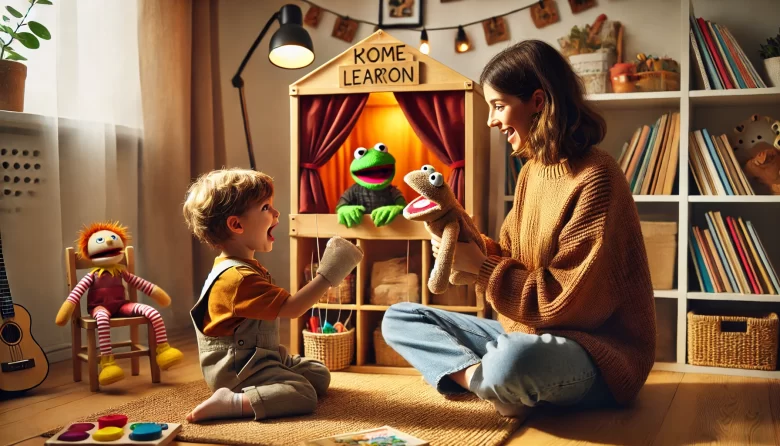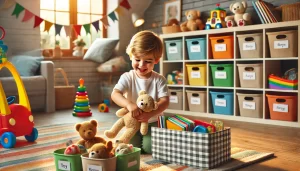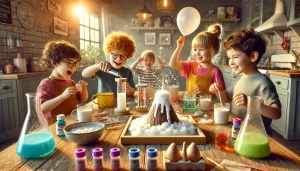Puppets and small theaters are powerful tools for early childhood education. They transform learning into an engaging, interactive experience that encourages creativity, storytelling, and social-emotional development. Whether you’re teaching language skills, social values, or academic concepts, puppets bring lessons to life in a fun and memorable way.
In this article, we’ll explore the benefits of using puppets for home education, how to set up a simple puppet theater, and practical ideas for incorporating puppets into learning.
Why Puppets Are Powerful Teaching Tools
Puppets help children learn in a playful and interactive way, making lessons more effective and enjoyable.
Key Benefits of Using Puppets in Learning:
✅ Encourages language development by prompting conversation.
✅ Boosts creativity and imagination through storytelling.
✅ Improves listening and comprehension skills.
✅ Teaches social-emotional skills by modeling empathy and communication.
✅ Makes learning fun and reduces the pressure of structured lessons.
🎯 Pro Tip: Children often express themselves more freely when talking through a puppet, which can help shy kids build confidence.
How to Set Up a Puppet Theater at Home
You don’t need expensive materials to create a fun and functional puppet theater. A few simple items can turn any space into an engaging storytelling stage.
Create a Simple Puppet Stage
🎭 DIY Puppet Theater Ideas:
✅ Tabletop Theater: Drape a blanket over a table and let kids perform behind it.
✅ Cardboard Box Theater: Cut a large hole in a box for a performance window.
✅ Curtain Doorway Theater: Hang a sheet in a doorway with a cutout for the puppets.
🎯 Pro Tip: If space is limited, a decorated poster board can serve as a portable puppet stage.
Make or Choose Your Puppets
Puppets can be store-bought or homemade, depending on what’s available.
🧸 Types of Puppets to Use:
✅ Sock Puppets: Draw eyes or glue felt pieces onto socks.
✅ Paper Bag Puppets: Decorate paper bags with drawn faces and cut-out features.
✅ Finger Puppets: Use small felt or paper characters that fit on fingertips.
✅ Stuffed Animals as Puppets: Turn favorite plush toys into talking characters.
🎯 Pro Tip: Let children create their own puppets to make storytelling even more personal!
Fun Ways to Use Puppets for Learning
Storytelling and Reading Comprehension
Puppets make storytime more interactive by acting out scenes or engaging children with questions.
📚 How to Use Puppets for Storytelling:
✅ Read a book and have puppets “discuss” the story.
✅ Act out key scenes with puppet characters.
✅ Let children retell the story using puppets.
🎯 Pro Tip: Give different puppets unique voices to make characters more distinct.
Teaching Social and Emotional Skills
Puppets are great for helping children understand emotions and social interactions.
😃 Ways to Teach Social Skills with Puppets:
✅ Use puppets to model problem-solving in social situations.
✅ Act out scenarios like sharing, kindness, and taking turns.
✅ Help children express feelings by speaking through a puppet.
🎯 Pro Tip: If a child is struggling with emotions, let them role-play the situation with a puppet to process feelings safely.
Practicing Language and Vocabulary
Puppets can help children develop speech and expand their vocabulary in a playful setting.
🔤 Language Learning with Puppets:
✅ Have a puppet “ask” questions, prompting the child to answer.
✅ Play a game where a puppet introduces new words and their meanings.
✅ Use puppets to practice storytelling and sentence building.
🎯 Pro Tip: If teaching a second language, use a puppet that only speaks in that language to encourage practice!
Math and Problem-Solving Games
Puppets can make math lessons more engaging by turning them into storytelling challenges.
➕ Math Activities with Puppets:
✅ Use a puppet to “ask for help” solving simple math problems.
✅ Act out real-life math scenarios (e.g., “I have three apples, but I ate one—how many are left?”).
✅ Play number recognition games by having a puppet hold up flashcards.
🎯 Pro Tip: Make math fun by giving puppets silly “math mistakes” for kids to correct.
Science and Exploration
Puppets can guide children through hands-on science activities in a playful way.
🧪 Fun Science Activities with Puppets:
✅ Have a puppet ask questions about nature and experiments.
✅ Use puppets to introduce fun facts about animals, planets, or weather.
✅ Act out a puppet “science show” where kids explain a discovery.
🎯 Pro Tip: Let puppets be the “curious students” while kids become the teachers!
Making Puppet Play a Daily Habit
Let Kids Lead the Play
Give children creative freedom to direct their own puppet shows and stories.
✅ Encourage them to make up original stories.
✅ Let them decide which puppets will “talk” during learning activities.
🎯 Pro Tip: Watch their stories unfold naturally rather than controlling the narrative.
Incorporate Puppets into Daily Routines
Puppets don’t have to be just for storytime—they can be part of everyday interactions.
✅ Have a puppet give morning greetings and reminders.
✅ Use a puppet to “help” with daily chores (e.g., “Let’s see if we can clean up together!”).
✅ Let puppets be a fun way to teach manners and social etiquette.
🎯 Pro Tip: If a child resists brushing teeth or bedtime, let a puppet “guide” them through the process.
Common Challenges and How to Overcome Them
“My child is shy and doesn’t want to use puppets.”
✔️ Solution: Start by demonstrating puppet play yourself, then invite them to join when they’re ready.
“I’m not comfortable making different voices.”
✔️ Solution: Use simple gestures and movements to animate puppets instead of voices.
“My child quickly loses interest in puppet play.”
✔️ Solution: Switch up characters, introduce new props, or let them create their own puppets for fresh excitement.
🎯 Pro Tip: Letting children be involved in making puppets keeps them engaged in the activity longer!
Final Thoughts
Using puppets and small theaters for teaching at home turns learning into an immersive and interactive experience. Whether storytelling, practicing language skills, or exploring emotions, puppets bring a new level of fun and engagement to education.
By incorporating puppets into daily play, parents and caregivers can nurture creativity, communication skills, and confidence—all while making learning feel magical!




